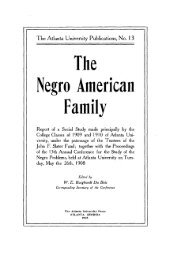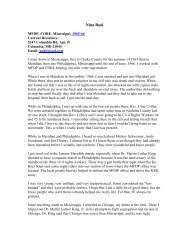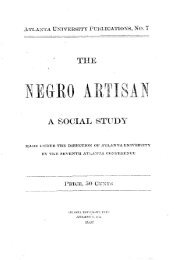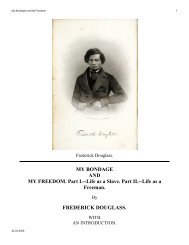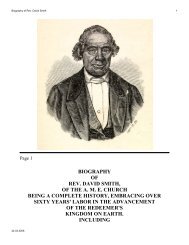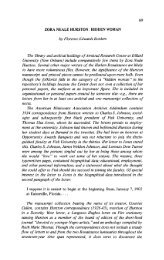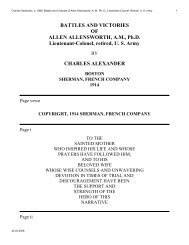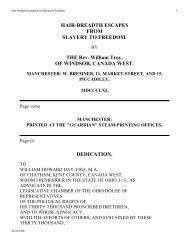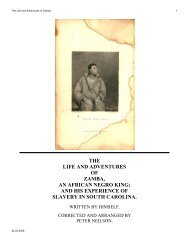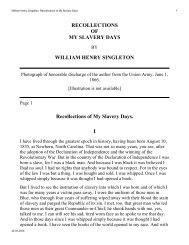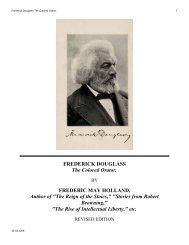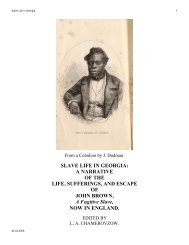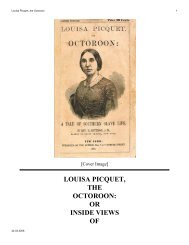Booker T. Washington, Builder o - African American History
Booker T. Washington, Builder o - African American History
Booker T. Washington, Builder o - African American History
You also want an ePaper? Increase the reach of your titles
YUMPU automatically turns print PDFs into web optimized ePapers that Google loves.
<strong>Booker</strong> T. <strong>Washington</strong>, <strong>Builder</strong> of a Civilization. 61<br />
24.03.2006<br />
In short, these Negro farmers were no more eager to be reformed and improved<br />
in their methods than are any normal people. There is a shallow popular<br />
sentiment that unless people are eager for enlightenment and gratefully receive<br />
what is offered them they should be left unenlightened. <strong>Booker</strong> <strong>Washington</strong><br />
never shared this sentiment. His agent reported that in response to their appeals<br />
for the raising of a better grade of cattle, hogs, and fowl the farmers replied that<br />
the stock they had was good enough. One of their favorite comments was,<br />
"When you eat an egg what difference does it make to you whether that egg was<br />
laid by a full-blooded fowl or a mongrel?" Instead of being discouraged or<br />
disgusted by this attitude on the part of the people he merely regarded it as what<br />
was to be expected and set about devising means to overcome it. As always he<br />
placed his chief reliance upon the persuasive eloquence of the concrete. He<br />
decided to send blooded stock and properly raised product's around among the<br />
farmers so that they might compare them with their inferior stock and products<br />
and see the difference with their own eyes. This plan was later carried out<br />
through the Jesup Wagon contributed by the late Morris K. Jesup of New York.<br />
This wagon was a peripatetic farmers' school. It took a concentrated essence of<br />
Tuskegees' agricultural department to the farmers who could not or would not<br />
come to Tuskegee.<br />
The wagon was drawn by a well-bred and well-fed mule.<br />
Page 75<br />
A good breed of cow was tied behind. Several chickens of good breeds, welldeveloped<br />
ears of corn, stalks of cotton, bundles of oats and seeds, and garden<br />
products, which ought at the time to be growing in the locality, together with a<br />
proper plow, for deep plowing, were loaded upon the wagon. The driver would<br />
pull up before a farmhouse, deliver his message, and point out the strong points<br />
of his wagonload and would finally request a strip of ground for cultivation.<br />
This request granted he would harness the mule to the plow, break the ground<br />
deep, make his rows, plant his seeds, and move on to the next locality. With a<br />
carefully planned follow-up system he would return to each such plot for<br />
cultivation and harvest, and, most important of all, to demonstrate the truths he<br />
had sought to impress upon the people by word of mouth. Where the first driver<br />
sent out was a general farmer, the second would be, let us say, a dairyman, the<br />
third a truck gardener, and finally a poultry raiser would go; usually a woman,<br />
since in the South women, for the most part, handle this phase of farming. These<br />
agents also distribute pamphlets prepared by the Agricultural Research<br />
Department of Tuskegee on such subjects as school gardening, twenty-one ways



